Makati
Makati <ma-ka-tee> is the financial capital of the Philippines.
Makati <ma-ka-ti> means being itchy.
Makati <ma-ka-ti> is also the term for low tide.
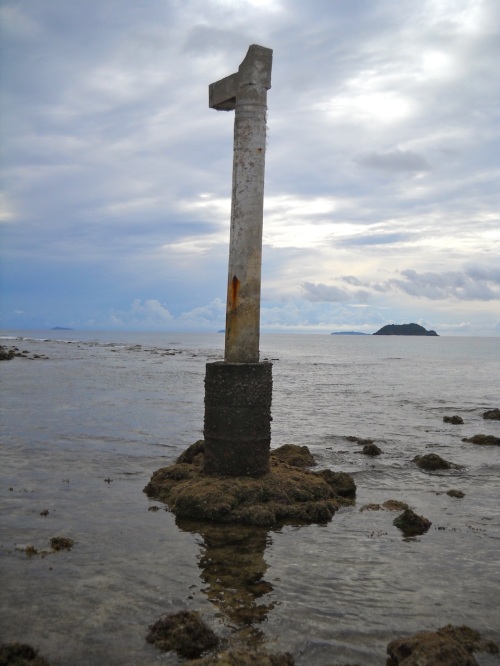
This signpost stands 400 meters from the beach. Taken at low tide.
The signpost shown above–exposed during makati–is used to guide the locals away from the bahura <ba-hu-ra>, underground rock formations, during madalem <ma-da-lum>, or high tide.
Such signposts are important especially when rocks have been deliberately planted to create fish traps.
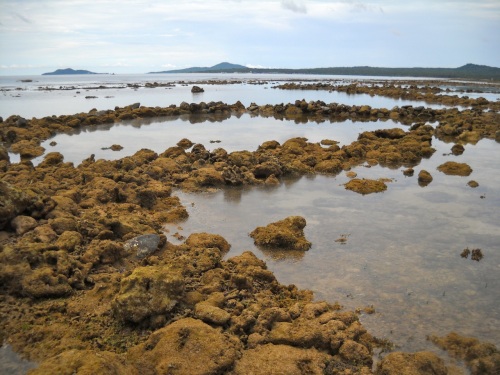
These rocks were planted in order to form fish traps.
Any fish caught inside these rock formations were trapped during makati. They were vulnerable to capture until the next madalem.
Cowrie
I had never stumbled upon a live cowrie until my host picked up this beauty.
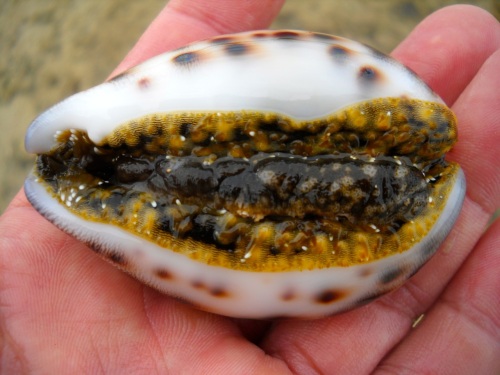
A live cowrie snail
Starfish
Many inhabitants of the intertidal zone are echinoderms. Last month I had reviewed a similar intertidal zone in Bancao-Bancao. This time, in Bisucay island, I encountered new creatures–animals that I had never seen before.
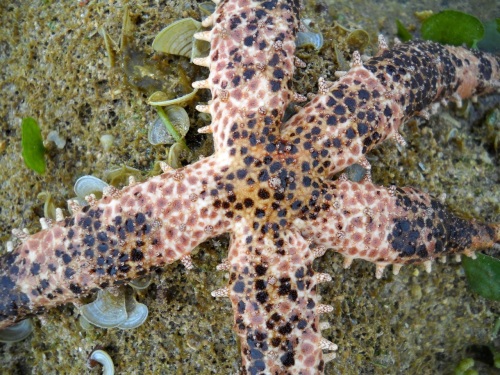
Starfish. The first time I've seen this kind.
Incidentally, two of this guy’s arms are regenerating (the shorter ones).
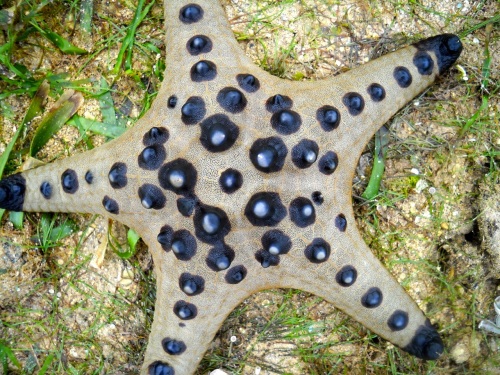
Horned Starfish. Fairly common.
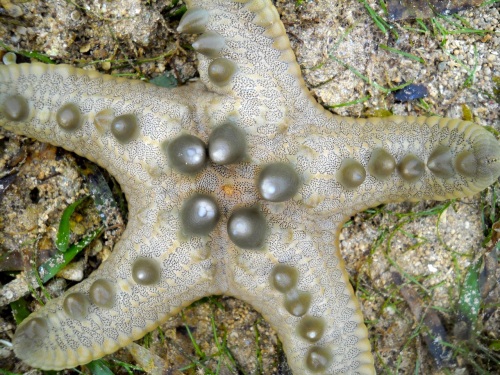
Horned Starfish. Another common species.
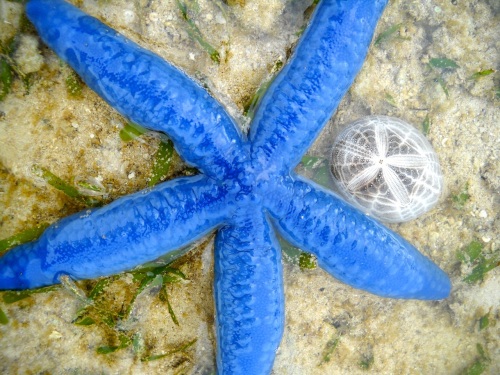
Starfish. This type is fairly common. Note the sand dollar.
Sand Dollars
Sand dollars are a type of Sea Urchin. The typical sea urchin resembles this.
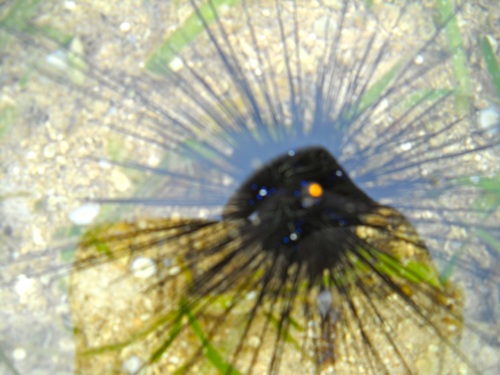
This bad boy was about 15 centimeters (6 inches) across!
There were large colonies of the nasty type shown above. Back in 2005, in Coron, I learned that this type–locally called tayong <ta-yong>–was harvested for food. My hosts in Bisucay island were not impressed. Anyone that had to harvest something that was so difficult to harvest and that yielded so little that was edible was truly desperate. They steered me to the alternative–a sand dollar locally called tirik <ti-rik>.
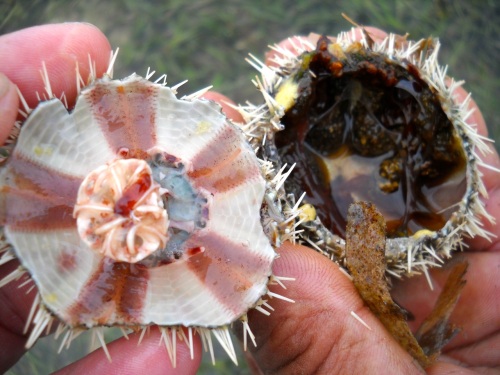
Tirik. Cuyonons prize the innards of this type of sand dollar.
I tasted several. It tasted like it looked: salty and slimy. It’s definitely an acquired taste. Also, I was cautioned about its high cholesterol. That makes sense. The internal organs of most animals are high in cholesterol.
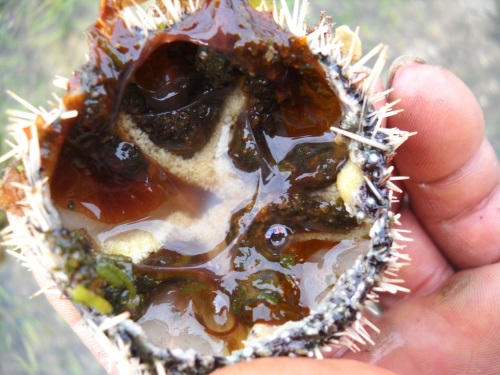
The edible part of the tirik.
I had never seen so many types of sand dollars in one beach as I did here.
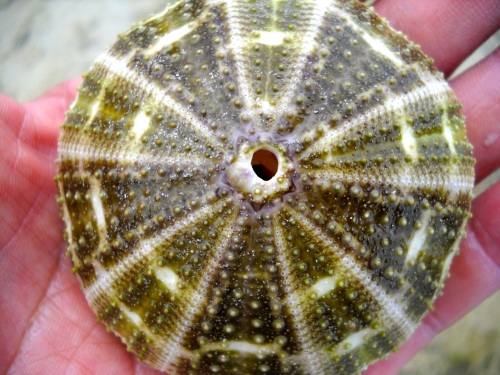
Sand Dollar. My first time to see this type.
None of these were edible according to my hosts.
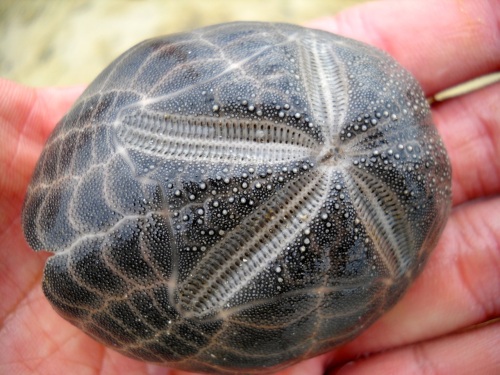
Sand Dollar. Another exquisite specimen.
These are the beautiful skeletons of this animal.
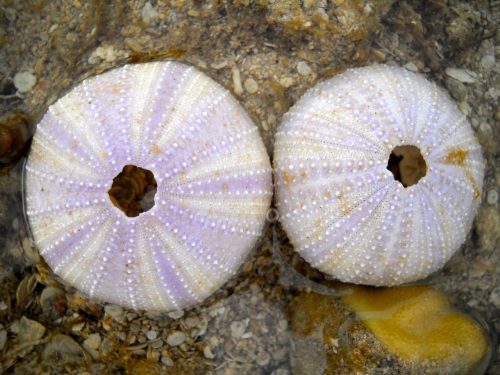
Sand Dollars. These are skeletons of the echinoderm that created it.
These skeletons are very fragile. When dropped, half the time they will drift to the ground. By the same token, the slightest pressure will shatter them.
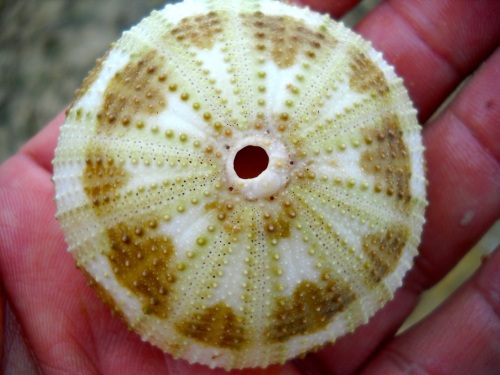
Sand Dollar. Another first for me.
The tirik was just the appetizer.
Sea Cucumbers
It was time to eat our “vegetable,” a cucumber–a sea cucumber to be exact. The edible kind is called a batunan <ba-tu-nan>. The inedible ones are simply called balat <ba-lat>.
I had previously written about commercially-harvested sea cucumbers.
My host started scraping the skin of this long batunan.
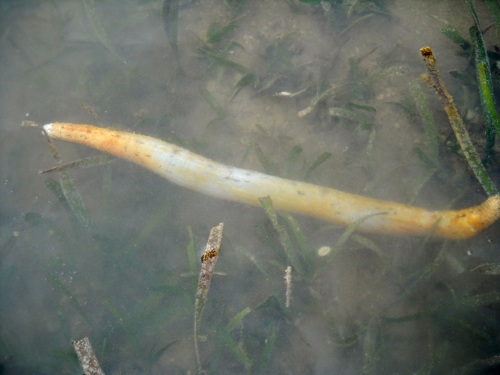
Batunan. The skin is scraped off. Then the flesh is cut up into bite-size pieces.
After scraping off the skin, the animal is cut up. The pieces tasted very salty but did not have much “give” (unlike octopus which has a rubbery texture).
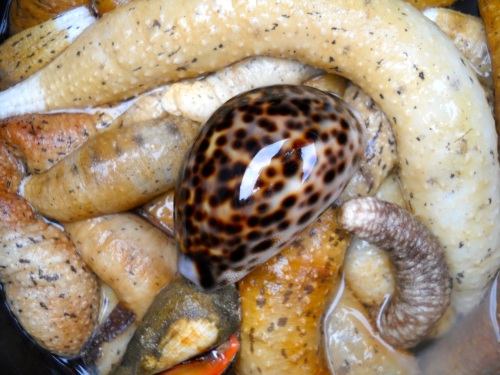
Our haul of batunan. Nice cowrie snail, isn't it?
Basket Star
Another first for me was seeing these beautiful specimen:
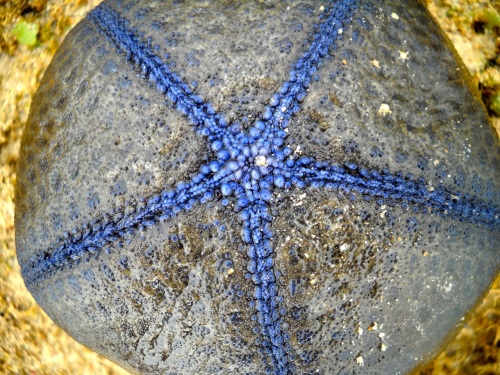
A gorgeous example of a Basket Star
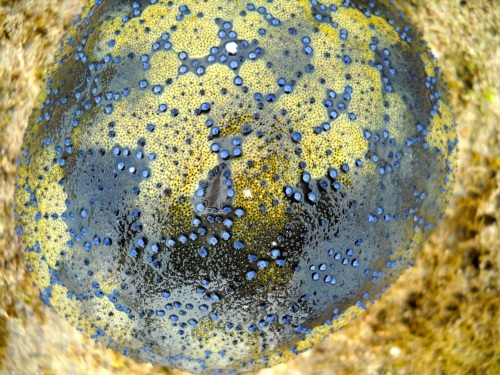
The top of the same Basket Star
The mouths of brittle stars and basket stars are located on their underside. They have no anus, so wastes are also expelled through the mouth.
To be continued
I’ll continue this next time. Our banca is in danger of running aground. The tide is dropping (makati) and I’m still here at the Internet Cafe! Later…




Nice i wanna go there soon
LikeLike
Nice post..
I miss PALAWAN.
I miss the beach and the fresh seafood… The tuba ang kinilaw. Awesome.
Hmmm.. perfectly paradise.
LikeLike